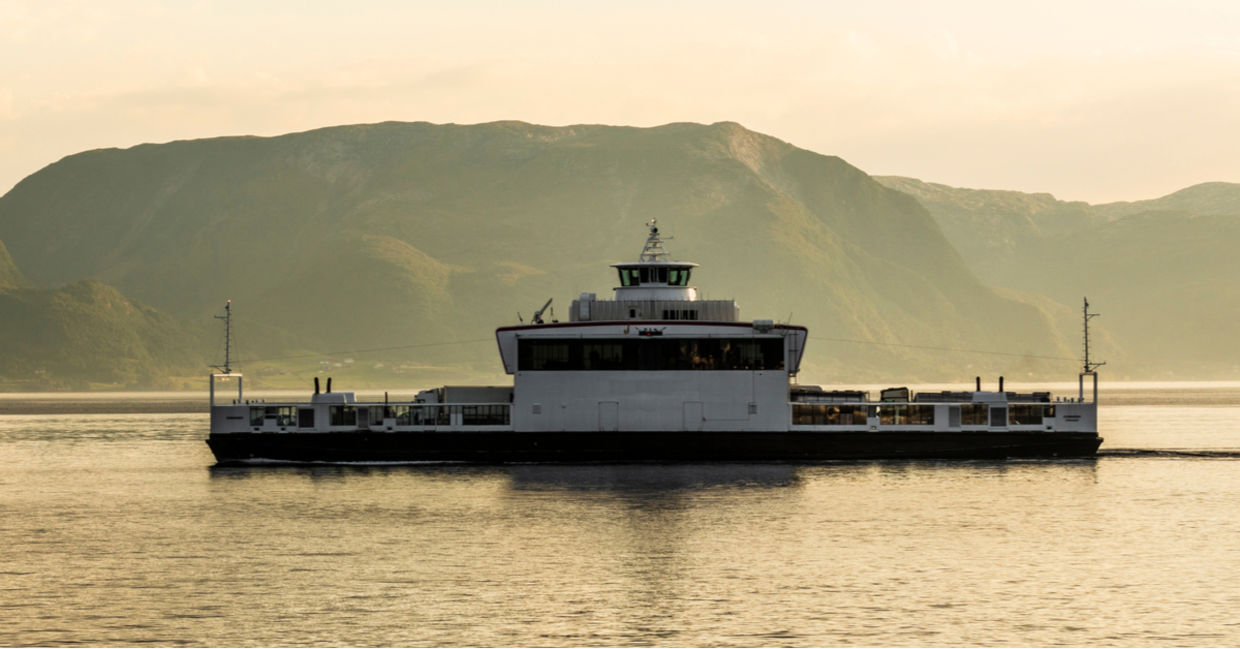
(Iver Daaland Ase - iverda / Shutterstock.com)
Columbus may have sailed the ocean blue but today ships are sailing green. Green powered by electric propulsion that is.
Electric vehicles are in. There are electric cars, electric trains, electric bicycles, electric recreational boats, and more recently, electric ferries. Canada has gotten on board with the electric ferry trend and ordered its first two large all-electric ferries.
The ferries will connect the mainland with Amherst Island and Wolf Island in Ontario. The performance of the ferries is not expected to be affected by the electrification, according to safety4sea. The vessels will carry the same amount of passengers and cars and the same speed of the conventional ferries now used on the routes.
What will change, is the amount of carbon emissions. The electrification of the two ferries will reduce emissions by the equivalent of 7 million kilograms of carbon dioxide per year. Kathryn McGarry, Ontario's Minister of Transportation told Safety4sea that “investing in innovative green technology is helping Ontario become a leader in North America for sustainable transportation and our government is committed to improving service, while simultaneously reducing our carbon footprint.”
Ferries are a natural place to start with in making maritime transportation greener. Since they cover the same routes over and over again, it is very easy to plan for the range and charging procedures in electrification.
The ferries are being built by Damen Shipyards in the Netherlands with Shottel (Germany) propulsion systems. The ships will be equipped with four electric twin propellers from Schottel, and a battery pack system will be installed while a diesel generator will serve as a backup.
Damen will also install an automated mooring system and a charging system that the ships will use to automatically connect to the shore power system and fast charge their batteries.
Electric ferries are already in use in other countries. The first all-electric passenger and car ferry, the Ampere, was put into service in Norway in 2015. The operators reported impressive statistics: after operating the ship for two years the Ampere cut emissions by 95 percent and costs by 80 percent.
This attracted a lot of new orders of all-electric ferries – Fjord1, a large Norwegian transport conglomerate – placed an order with the Havyard Group to build a fleet of battery-electric ferries and for the conversion of existing diesel-powered ferries.
New York City is getting its first all-electric ferry in 2019 that will connect Brooklyn to the East side of Manhattan.
All-electric ferries are clearly a great first step in the greening of the maritime industry. It may have had a later start than other forms of green transportation, but it is making waves to catch up.
YOU MIGHT ALSO LIKE:
9 Cities Around the World That Are Going Car-Free
Dutch Drivers Can Soon Charge Their E-Cars at Every McDonalds
Good News: Norway Just Hit a Major Milestone in Going Green







